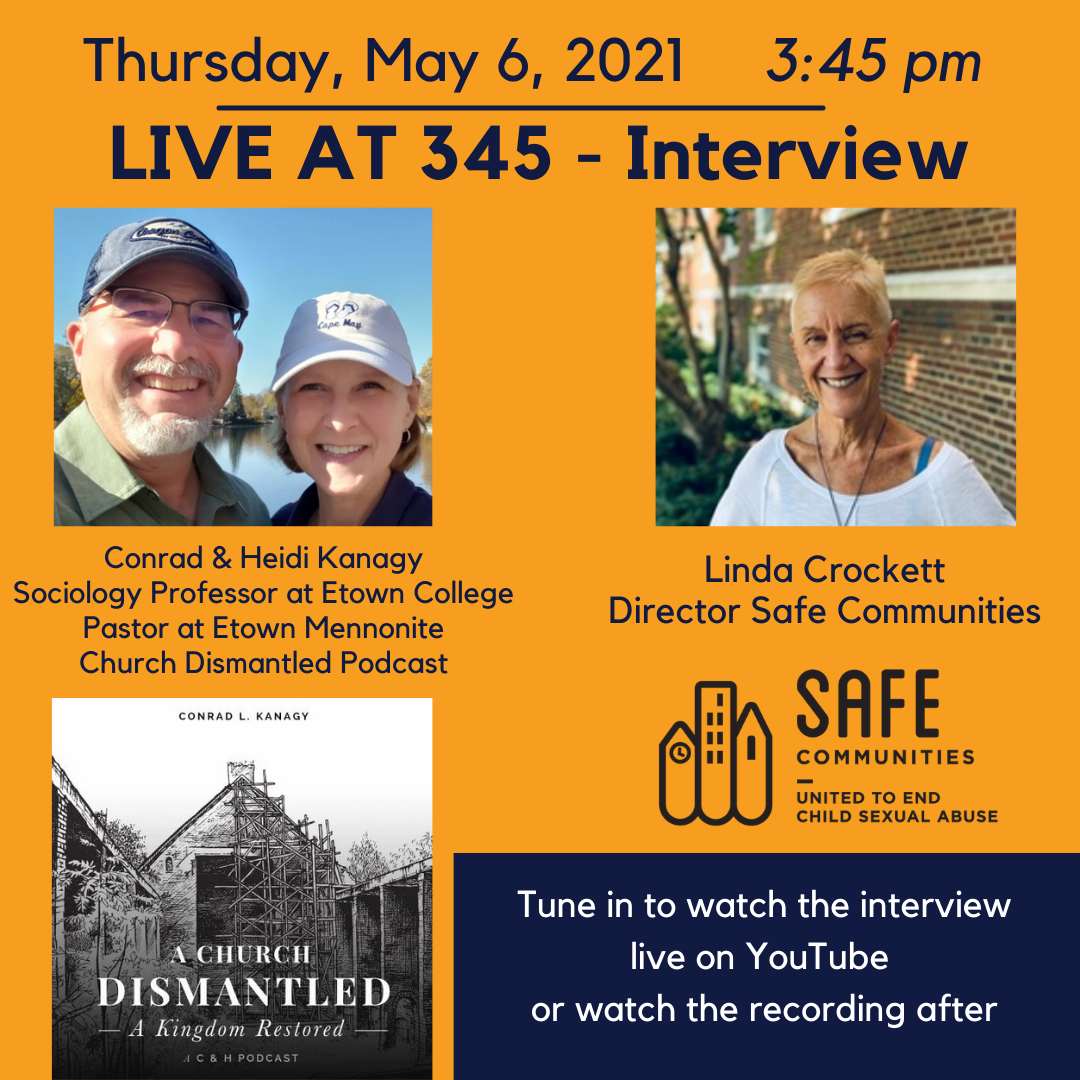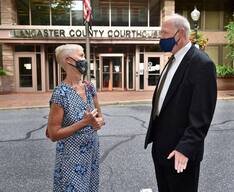newsletterspress releasesChild sexual abuse survivor Linda Crockett nears retirement from career aimed at helping others like her
April 2024 Press Release Survivor Voices: Victoria Gehman
April 2022 Press Release |
In the newsOur system often fails victims of domestic and sexual violence [column]
The brutal rape and criminal homicide of 12-year-old Elaina Smith, allegedly by a registered sex offender who had previously assaulted her mother, is a sobering reminder that justice for victims of sexual and domestic violence often comes too late, if at all. Our thoughts and prayers are with those who loved Elaina as they mourn. Her death reminds us of the urgent need to work together as concerned citizens to improve the responses of our criminal justice and child protective service systems to sexual abuse and domestic violence. To work effectively for change, we need to become better educated about the issue. There seem to be multiple issues — such as domestic violence and its intersections with child abuse — involved in Elaina’s case. But let’s start with registered sex offenders. Most cases involving sexual crimes against an adult or child do not get a jury trial. Charges are often reduced (pleaded down) to obtain a guilty plea, as was the case with the man charged with raping and killing Elaina. In August 2021, Jason Shackelford pleaded guilty under a negotiated plea agreement to indecent assault, terroristic threats and a firearms violation for crimes he committed in December 2019 and January 2020. His victim in these crimes was Elaina’s mother. This plea agreement was negotiated despite the fact that she told police she had been sexually assaulted repeatedly by Shackelford, and had been punched and choked in an assault that resulted in her needing stitches. According to court records, Shackelford violated a protection from abuse order and threatened Elaina’s mother with a handgun he could not legally possess because of an earlier felony conviction. Even a victim who wants her day in court likely will not see it unless the prosecutor believes her case can be won. In part, this is due to juries not being well informed about delayed and fragmented disclosure by victims — which is common, because the brain processes and stores traumatic memories differently. Juries often don’t understand trauma bonding, the attachment sometimes formed between a victim of trauma and the perpetrator. And then there’s the stark reality that many offenders appear to be trustworthy individuals to those who are not their victims. Some (not all) of the convictions listed for offenders on Pennsylvania Megan’s Law registry are a result of this plea process, leading to a public misperception of the dangerous nature of offenders. Such was the case with Shackelford, whose acts of violence included the choking of Elaina’s mother. According to the Pennsylvania Coalition Against Domestic Violence, an “abuser’s attempt to strangle the victim can be a dramatic predictor of future lethality in intimate partner violence cases.” Offenders go unchecked Notification by law enforcement to those living near a registered offender only takes place when the offender is adjudicated a sexually violent predator. Such offenders represent a small portion of those on the state registry, so it is up to the public to use the tool provided by the registry to inform themselves. In Pennsylvania, sex offenders are classified by three tiers, with Tier I requiring registration for 15 years, Tier II for 25 years and Tier III for life. And while the tiers are helpful classifications, many people erroneously believe that once a person is off the registry or released from prison, they are no longer a danger to children. Research indicates that sexual recidivism rates for child sexual offenders increase over time, rising from 5% after three years, to 23% after 15 years, to 52% after 25 years, according to the U.S. Department of Justice’s Sex Offender Management Assessment and Planning Initiative. In addition, if an offender serves a full prison sentence, he (and sex offenders are overwhelmingly male) can be released without parole, even though they may still appear on the registry. This means they lack any meaningful supervision by the court. Finally, the cases of the youngest victims of sexual abuse seldom make it into the criminal justice system. The 4-year-old who has been raped by his grandfather does not typically make the kind of disclosure that is considered compelling and detailed enough to stand up in court. At best — and usually only if there is medical evidence, a detailed disclosure, a credible witness to the act, or an admission by the perpetrator — the offender will be placed on the child abuse registry, which is not accessible to the general public. Most offenders are not listed on a registry or serve time in prison because they never get caught, charged and prosecuted. Protecting the vulnerable Despite adult retrospective studies showing that 1 in 4 women and 1 in 6 men experienced contact sexual abuse before age 18, the vast majority of child sexual abuse cases are never reported to authorities. Fewer than 1 in 5 child sexual abuse cases are prosecuted, and only half of those prosecutions result in a conviction or guilty plea, according to the Office of Justice Programs’ National Criminal Justice Reference Service. Medical evidence is available in less than 5% of these cases. Even with penetration of some kind, young children heal very quickly. It’s important to note that false allegations by children are uncommon, averaging less than 5% for younger children. Child sex offenders come from all socioeconomic, racial and ethnic groups. While men are the majority of offenders and the focus of most research, women also sexually abuse children and often fly under the radar because people tend to believe a child is safe with a female caregiver. Consider that 90% of children who are sexually abused know, live with or are related to the offender. Many offenders are married and have children, and many gravitate toward professions or volunteer in places that give them regular access to children. In a large 2001 study of incarcerated child sexual offenders, 93% described themselves as religious and spoke of churches as being easy to operate within. Unfortunately, the religious impulse to forgive can overtake the need for careful consideration of whether or not a sex offender can safely integrate into a congregation. Even with stringent boundary provisions and supervision, some sex offenders are simply too dangerous to risk contact with vulnerable children. Many people also assume that an offender who rapes an adult is not a danger around children. Elaina Smith was allegedly raped and killed by a man who also sexually assaulted her mother, a classic example of crossover offending, in which offenders choose victims from multiple age, gender and relationship categories. Research indicates that about 20% of offenders had a prior victim of a different gender and 40% crossed over in age categories. There is no excuse for our systemic failures to protect children and to provide justice to survivors of sexual violence. And there is no excuse for those in charge of our schools, places of worship and other organizations to not educate adults and children about safety from sexual abuse. Too many focus exclusively on background checks and mandated reporting after a child may have been abused. This does little to build the guardrails needed to stop abuse before it happens. It seems that Elaina Smith had no guardrails to protect her. To honor her memory, let’s start building some now. Lancaster County is a long way from being a “safe community” for children. We can change that. Linda Crockett is the executive director of Safe Communities (safecommunitiespa.org), a nonprofit working to end child sexual abuse. Safe Communities will offer a free Zoom workshop at 6:30 p.m. Tuesday, March 28, that focuses on sex offenders and what all adults who care about children need to know. Register at safecommunitiespa.org. 24-hour sexual assault hotline: 717-392-7273 Report suspected child abuse to ChildLine: 1-800-932-0313
Reopening Anxiety - Neeta Dedhia_LNP Print
LNP/Lancaster Online: May 15, 2021 (print) Reopening Anxiety Reopening Anxiety Workshops - Neeta Dedhia_FOX 43 News Interview
Fox 43 News at 10: May 5, 2021 Safe Communities Reopening Anxiety Workshop Reopening Anxiety Workshops - Neeta Dedhia_LNP Online
LNP/Lancaster Online: May 3, 2021 (online) Neeta Dedhia interview on Reopening Anxiety Workshops
| ||||||||||||||||||||||||||||||||||||||||
|
© Safe Communities. All rights reserved, 2021.
|
subscribe to email updates |















